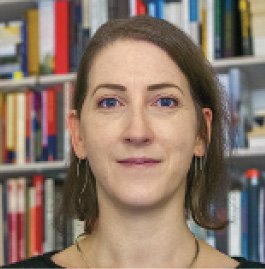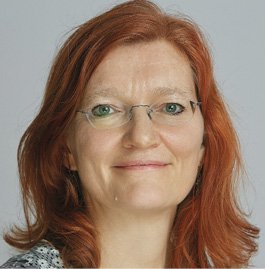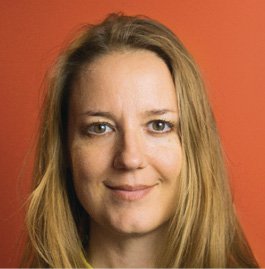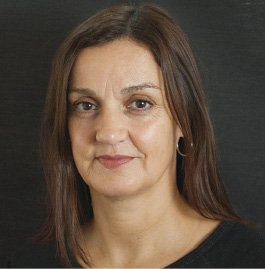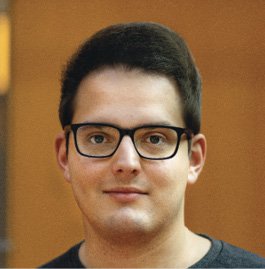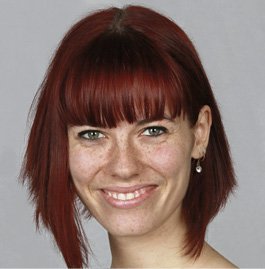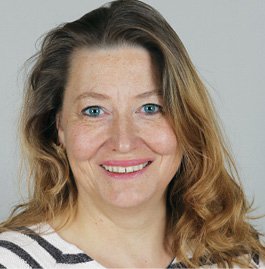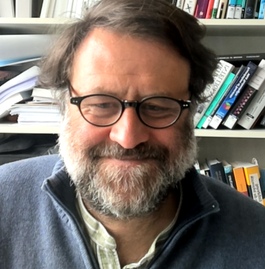
About
Curators
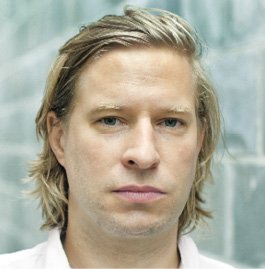
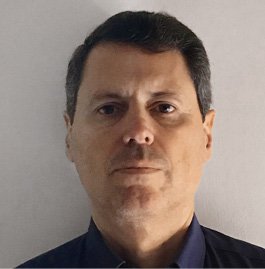
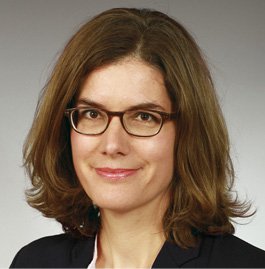
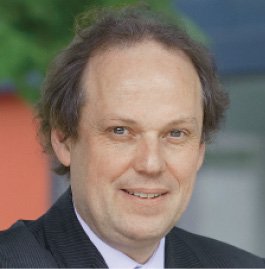
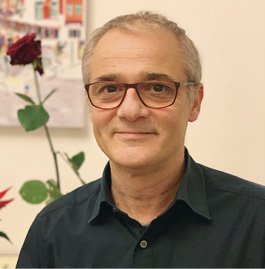
Greetings
Jürgen Renn
Director at the Max Planck Institute for the History of Science
No battle noise could be heard, only the rippling waters of the nearby river. Even time flowed more languidly now, or so it seemed in this peaceful landscape. But everything was in flux in the late summer of 1502, and not only in central Italy. It was a time of rapid change, bold plans, swift conquests, and breaking orders.
Was there nevertheless a deeper order hidden behind all the turbulence, of the water and perhaps also of the vicissitudes of human history?
One had only to observe very carefully, and of course record what one saw—no, to be able to recreate from an understanding of the inner efficacy of things, to be inventive in doing so, perhaps even more inventive than nature itself, always seizing the opportunities of the moment—but all that was apparently not enough.
It was necessary not only to grasp the world in its entirety, to make it one’s own, but also to acquire its knowledge, all the knowledge, including the lost knowledge of the Ancients, the long-neglected knowledge that was now circulating again in broader streams.
This was thanks to the obsessive hunters and collectors of ancient texts; texts that had long been gathering dust and decaying in old libraries or attics but had now been given a new lease on life, so that their authors were now contemporaries with whom one could converse, one could imitate, and, if possible, even surpass.
But to enter into conversation with them, one had first to find them. After all, mechanics helped the new technology of printing, yet another prodigy of that art that so generously endowed the age with inventions, both martial and peaceful, and whose cornucopia was far from exhausted.
Being in exchange with the world did not only mean socializing with other artists, architects, engineers, and mechanics, nor simply feeling at home in workshops and on construction sites. It did not just mean impressing soldiers, army commanders, diplomats, literati, and politicians at courts and palaces with clever and elegant speeches and promising plans and projects. Nor was it enough to occasionally leave the cities to wander through mountains and valleys and rural towns like these, where one could quietly watch birds fly, to consider whether this was not perhaps another mechanical art that could be surpassed.
The notebook, whose cover might once have been as light blue as the sky over the valley, was the only companion on the walk that afternoon, a silent yet eloquent counterpart, a mirror of time that allowed one to converse with the past and future self, and to which one could confide one’s thoughts, even if no one else might yet understand them: “The bird is a machine that works according to mathematical laws.”
With whom might one speak about it? From whom could one learn more about the secrets of mechanics, wrapped as they are in the language of mathematics, the most difficult but perhaps most fruitful of all languages? The ancients had probably mastered it best, and from them one could learn more about the lost and to be regained paradise of mechanics, where one could reap the fruits of mathematics.
Rapid change, conquests, and shifting rulers, the hustle and bustle of such notorious condottieri as Cesare Borgia and Vitellozzo Vitelli also had advantages for someone who was not on a reckless hunt for power but rather for knowledge. And who did not hesitate to seize the moment, especially when it came to
inning over such an important interlocutor as Archimedes, the prince of mechanics, for his endeavors. A short note in the booklet with the light blue cover is intended to remind the future self not to let opportunities pass by:
“Borges will get you the Archimedes of the Bishop of Padua, Vitellozzo, the one that is in Borgo San Sepolcro.”
Hunting down and collecting books, even stolen ones, and building up a library was a bold undertaking in those days, an impresa comparable to the campaigns of the condottieri, undertaken at one’s own risk but promising the reward of conquering an intellectual realm and creating one’s own intellectual cosmos.
The historical reconstruction of Leonardo da Vinci’s unique book collection is just such an impresa, and its realization in an exhibition with a selection of valuable historical books even more so. Imprese are undertaken in adventurous company. It includes masterminds, courageous pioneers, generators of ideas, architects, engineers and craftsmen, scholars, students, artists, lenders and donors, and other supporters of diverse expertise and provenance. They have all worked together to make the exhibition “Leonardo’s Intellectual Cosmos” a new look at one of the most fascinating figures in cultural history. So, enter Leonardo’s Berlin library and welcome to his intellectual cosmos!
According to history of science, the practice of craftsmanship and of art, and artists who were also scientists, and scientists who were also engineers—from Leonardo to Galileo—played a decisive role in the emergence of modern science. In the case of Leonardo, the main focus of interest has been on his inventions and technological visions. This has led to a distorted image that ultimately denies him any deeper intellectual context. But a systematic and careful study of Leonardo’s manuscripts shows us an artist, scholar, and scientist who had an intimate relationship with books, culture, and the authors of his time, as well as those of classical antiquity.
Based on the important work of the Italian scholar Carlo Vecce (La biblioteca perduta. I libri di Leonardo, Rome 2017), the Max Planck Institute for the History of Science (MPIWG), together with the Museo Galileo in Florence, had planned to exhibit “Leonardo’s Intellectual Cosmos” in Berlin on the occasion of the 500th anniversary of Leonardo da Vinci’s death and the 25th anniversary of the founding of the MPIWG. Research on the Renaissance plays a central role at our institute, which has maintained diverse partnerships and collaborations with institutions in Italy since its founding in 1994: in Florence with the Museo Galileo, the Opera del Duomo, and the Kunsthistorisches Institut, as well as with the Bibliotheca Hertziana in Rome (both institutes of the Max Planck Society), the University of Urbino, and the Centro Internazionale di Studi Telesiani, Bruniani e Campanelliani in Cosenza.
The exhibition is an adaptation of the Florentine exhibition “Leonardo and his books: the library of the universal genius,” curated by Carlo Vecce and shown at the Museo Galileo from June to September 2019. Due to the global coronavirus crisis, the date for the Berlin exhibition had to be postponed twice so far. I would like to take this opportunity to thank all the organizers, institutions, speakers, artists, and exhibition guests for their patience and flexibility throughout the planning process. As this volume goes to press, the scheduled date for the opening, May 10, 2021, falls in the year in which we celebrate the 700th anniversary of the death of Dante Alighieri, whose Divine Comedy formed a significant reference point in Leonardo’s intellectual cosmos. Pandemic situation permitting, the exhibition will be open to visitors from May 11 to June 28. The MPIWG will accompany the exhibition with scholarly and public activities and events. Rather than focusing on Leonardo as a precursor to the modern technological world, the exhibition honors his art and science, his thought and practice, as part of a distinct intellectual world. For Leonardo, this included the endeavor to never separate theory from practice and to perceive this world as a whole, to constantly question its apparent fixed points and thus keep it in constant motion.
A further goal of the exhibition project is to illustrate the value of the far-reaching intellectual networks and mutual connections that have fostered the development of science and culture since the early modern period. The reconstruction of Leonardo’s library and its presentation in the exhibition opens a new perspective on Leonardo, showing him as an intellectual and artist-scientist whose work was only made possible by the diversity of such connections and networks.
The exhibition places Leonardo’s library in the context of the burgeoning book culture at the turn from the 15th to the 16th centuries and illustrates the role this culture played in his intellectual development and creative process. While the scholarly work of identifying the books by deciphering Leonardo’s notes and lists can be considered almost complete, the way in which these books were collected and actually used in his library is still the subject of debate and research.
Looking back at the book culture of the Gutenberg era is more relevant today than ever before, confronted as we are with the challenges of a new media revolution that makes it possible, in principle, to make the accumulated knowledge of humankind available to every single person. We are still far from shaping an intellectual cosmos that exploits this potential of the new media, and instead run the risk of losing it in an unmanageable fragmentation and amalgamation of information and disinformation.
Over the past two years, the exhibition project has evolved into a multifaceted endeavor that, in turn, could not have been realized without wide-ranging networks and the cooperation, support, and hard work of many institutions and individuals who I will mention below.
First of all, I would like to thank our long-time cooperation partner, the Museo Galileo, especially its director, my friend of many years, Paolo Galluzzi, and his entire team, particularly Laura Manetti and Jacopo Tonini, who inspired us to undertake this project. Their collaboration and support from the beginning has laid the foundation for all further developments. In addition, Alessandro Nova from the Kunsthistorisches Institut in Florence and Carlo Vecce from the University of Naples have accompanied and supported the project with their incredibly broad knowledge of Leonardo—from the development of the first idea to its realization in the exhibition. We thank Paolo Galluzzi, Carlo Vecce, and Alessandro Nova from the bottom of our hearts for their continued support and commitment. Through their lectures at our 2019 Leonardo Symposium (“Leonardo da Vinci. An Inquisitive Man: Technologist, Scientist and Artist”) on the occasion of the 500th anniversary of Leonardo’s death and their contributions to this catalogue, they have made their knowledge available to a wider audience.
Without the generous funding from our partners, the NOMIS Foundation, this project would certainly not have come about. We owe the contact to Barbara Bludau, the former secretary general of the Max Planck Society, and Reinhard Pöllath (Supervisory Board of the Max Planck Foundation). We would like to sincerely thank the representatives of the NOMIS Foundation, Markus Reinhard and Ruben García Santos, for their support and especially for believing in the potential of the exhibition when it was only a rough sketch on a sheet of paper. Their flexibility and encouragement at all stages of the project’s development have brought us to where we are now.
It is obvious that an exhibition of books is inconceivable without the close cooperation and support of the institutions that preserve them. Our thanks here go to Hermann Parzinger, president of the Stiftung Preußischer Kulturbesitz (Prussian Cultural Heritage Foundation), who has generously encouraged the project from the outset. We would like to give a special thanks to the Staatsbibliothek zu Berlin (Berlin State Library) and its director, Barbara Schneider-Kempf, as well as to Gudrun Nelson-Busch, Falk Eisermann, and the entire team. As curators, they have not only identified and made the crucial books available but have also generously supported the realization of the exhibition and its opening events. Over the past months, they have been our close collaborative partners in all matters of coordination, book restoration, and, of course, the presentation of the books in the exhibition. In this context, we would also like to thank our colleagues at the Kupferstichkabinett (Museum of Prints and Drawings) and the Kunstbibliothek der Staatlichen Museen zu Berlin (Library of Art History of the Berlin State Museums), who also provided books that proved to be valuable additions to the exhibition.
Given the overarching theme of commemorating Leonardo da Vinci on the 500th anniversary of his death, we have worked closely with the Italian Embassy in Berlin. At this point, I would like to sincerely thank His Excellency Ambassador—and patron of the exhibition—Luigi Mattiolo, as well as First Counsellor and Head of the Cultural and Economic Section of the Embassy, Francesco Leone, former Scientific Attaché Matteo Pardo and the entire team at the Embassy for their partnership. They were not only our partners in organizing the Leonardo Symposium in April 2019, held at the MPIWG and the Italian Embassy, but they generously supported us in all phases of the project and in all accompanying events.
Special thanks also go to the Governing Mayor of Berlin, Michael Müller, for his contribution to our Leonardo Symposium and his continuous support in making the exhibition a reality, despite his burden as a responsible politician in the difficult times of the Corona pandemic.
The mastermind behind the exhibition design is our architect Serge von Arx, who already shaped our large Einstein exhibition in 2005. I would like to express my deepest gratitude to him and his team, especially also to Andreas Fuchs and Armin Schreiter. We owe the exhibition in its current form to their creative and tireless work.
In order to place Leonardo’s books in the context of his life through exemplary objects, we have embarked on a seemingly endless search for suitable exhibits. At this point, I would like to especially thank the director of the Museum für Naturkunde (Natural History Musuem) Johannes Vogel and his team, as well as Joachim Breuninger and Kerstin Wallbach from the Stiftung Deutsches Technikmuseum (German Museum of Technology), Felix Lühning, Director of the Archenhold Observatory, and again the colleagues from the Staatsbibliothek zu Berlin and the Museo Galileo for their support, which went far beyond providing key exhibits.
Last but not least, I would like to thank the entire team at the MPIWG for their hard work on this project, first and foremost Matteo Valleriani, who not only played a major role in shaping the exhibition concept but was also the driving force in bringing its ideas to life. The curatorial team also included Antonio Becchi, whose knowledge of Leonardo and his work was of crucial importance to our joint work, and Sabine Hoffmann, whom I would like to thank especially for producing the excellent texts that form the link between the exhibits, the books, and Leonardo’s scientific themes, and who thus played a major role in bringing Leonardo’s intellectual cosmos to life.
Editing the catalogue in German and English was in the proven hands of the Publication Manager of Department I of the MPIWG, Lindy Divarci, who mastered this Herculean task in record time with assistance from Nina Bätzing, Elizabeth Hughes, and Birgitta von Mallinckrodt. Mona Friedrich and Lina Schwab mastered the planning and coordination of the processes and the communication internally and externally with aplomb. Nina Bätzing and Vivienne Rischke contributed imaginatively to all components of the exhibition, from the object search to the bibliography to the design of exhibits. Dirk Wintergrün and his team, in close collaboration with the Museo Galileo team, have created a virtual exhibition making Leonardo’s Berlin library available online. On the part of the MPIWG, Ohad Parnes, Hans-Jakob Ziemer, and Jörg Fischer have worked diligently on sponsorship, press relations, and the organization of the 2019 Leonardo Symposium, not to mention contracting. Thanks also go to the MPIWG administration, whose work behind the scenes cannot be underestimated. Finally, a very special thank you goes to Sabine Bertram and the entire library team led by Esther Chen. Without their extremely thoughtful and dedicated help, there would be no Berlin Leonardo Library. We would also like to express our sincere thanks to Henrik Haak (Fritz Haber Institute of the MPG) for his technical support.
Last but not least, we would like to thank Claudio Pescio and his entire team at Giunti Publishing, especially Dario Dondi, Lorenzo Mennonna, and Elisabetta Marchetti. They have given this volume the wonderful design in which it is presented here.
Paolo Galluzzi
President of the Italian National Committee for the Commemoration of the 500th Anniversary of the Death of Leonardo da Vinci – scientific Director of the Museo Galileo, Florence
While referring to himself as an “unlettered man,” Leonardo did not limit himself to learning and accumulating knowledge only through the direct study of natural phenomena. He devoted equal attention to an intense dialogue with both ancient and modern authors. With the passing of the years he became not only a passionate reader, but also an insatiable hunter of books and manuscripts. He regarded these texts as precious maps which indicated unexplored paths to knowledge that he could follow to reach original insights and awareness. By the time of his death, he owned almost 200 works: an extraordinary library for a 15th-century artist-engineer, not only in terms of quantity, but also for the variety of disciplines covered. Leonardo carefully recorded these volumes in his manuscripts to ensure that he could safely retrieve them when he returned from one of the many journeys undertaken during the course of his lifetime.
Unfortunately, the books and manuscripts accumulated by Leonardo have disappeared without trace. Only one exemplar of the texts that went their various ways after his death has survived: the Treatise on Architecture and Machines by Francesco di Giorgio, the splendid parchment manuscript preserved in the Biblioteca Medicea Laurenziana in Florence, on which Leonardo registered 12 annotations.
Through his long-term commitment to exploring the manuscripts and documents on the life and works of Leonardo, the renowned Leonardo scholar, Carlo Vecce, has reconstructed the contents of Leonardo’s library. He has also provided valuable information on the stages of Leonardo’s acquisition of these complex resources with which he maintained a constant and fruitful dialogue. The results of this thorough investigation are available to the international community of Leonardo scholars thanks to the book titled La biblioteca di Leonardo, recently edited by Carlo Vecce (Florence 2021).
The impressive work accomplished by Vecce, in collaboration with dozens of specialists from the multiple disciplines on which Leonardo the bibliophile focused his inexhaustible curiosity, constitutes a landmark in Leonardo studies. For the first time, students of the Universal Man have at their disposal an exhaustive list from which to draw reliable information on the sources that inspired him. Leonardo was never a passive reader; he combined admiration for the authors of the texts that intrigued him most with his instinctive inclination to question their conclusions or to test them for their reliability.
La Biblioteca di Leonardo is a work to be used in conjunction with the Digital Library of his Books and Manuscripts, published by the Museo Galileo (https://bibliotecadileonardo.museogalileo.it).
This freely accessible tool is indispensable to understanding the impact on Leonardo’s literary, artistic, technical, and scientific production of the resources that he consulted. The creation of this formidable resource was made possible by the generosity and collaboration of the libraries and cultural institutions that authorized the digitization of the valuable historical documents they preserve.
The exhibition Leonardo and his Books: The Library of the Universal Genius was a milestone in the research project that culminated in the publication of the above-mentioned volume. It was first staged in the summer of 2019 by the Museo Galileo in collaboration with the Commission for the National Edition of the Manuscripts and Drawings of Leonardo da Vinci, and with the patronage of the National Committee for the Commemoration of the 500th Anniversary of the death of Leonardo da Vinci. From Florence, the exhibition moved to Rome, where it was displayed at the Accademia dei Lincei. The exhibition effectively contributed to disseminating awareness of the strategic role played by books and manuscripts in Leonardo’s intellectual development and in nourishing his programmatic interdisciplinary approach.
It is immensely satisfying to see that this exhibition will now return to the stage in a new and enriched format, in line with the spirit of continuous improvement that characterized Leonardo’s mind and his thirst for knowledge. This enhanced version of the original exhibition is the outcome of the commitment and scientific competence of the authoritative colleagues of the Max Planck Institute for the History of Science in Berlin. Through the Director, my friend and colleague Jürgen Renn, I would like to express my deepest admiration and most sincere congratulations to all the scholars of this prestigious research institution who have brought this ambitious project to fruition despite the difficulties posed by the Covid-19 pandemic, which continues to scourge the planet as I write.
I would like to express my gratitude and appreciation also to Barbara Schneider-Kempf, Director of the prestigious Staatsbibliothek zu Berlin, who believed in this project from the start, and to the Italian Ambassador in Berlin, S.E. Luigi Mattiolo, who offered, together with the Istituto Italiano di Cultura, his valuable encouragement and support for the presentation of this exhibition in the capital of the Federal Republic of Germany.
Ulman Lindenberger
Vice-President of the Human Sciences Section of the Max Planck Society
It gives me great pleasure to welcome you as visitors to the exhibition and readers of the catalogue Leonardo’s Intellectual Cosmos. The exhibition team, led by Jürgen Renn, has succeeded admirably in bringing the project to a conclusion in these times of pandemic. The team as well as the participating institutions—the Max Planck Institute for the History of Science, the Staatsbibliothek zu Berlin, the Museo Galileo, the Ambasciata d’Italia a Berlino, and the NOMIS Foundation—all deserve our great thanks.
Whereas Leonardo is known to the public primarily for his artistic masterpieces, this exhibition takes a look at his contemporaneity. Which works did Leonardo read? What knowledge did he possess when he embarked on his own studies? For answers to these questions, the exhibition organizers have reconstructed Leonardo’s library. Since Leonardo’s own books are lost, they have assembled the Berlin Leonardo Library from comparable contemporary works. The volumes come from Berlin holdings, especially from the Staatsbibliothek, but also from the library of the Max Planck Institute for the History of Science. They now bear witness to the knowledge that made up Leonardo’s intellectual cosmos.
The contrast between Leonardo’s books and his own notes is particularly revealing. Leonardo’s notebooks show the unfinished, experimental super-richness of his work. A beautiful example is offered by the first exhibit of the exhibition (1 σ). On this sheet, Leonardo presents geometry exercises for the transformation of different rectangles. Suddenly the argumentation breaks off with a terse “ecc.” referring to a possible, perhaps even intended, continuation of the discourse. He also communicates the reason that forces the sudden interruption: “ecc. perché la minestra si fredda.” Because the soup is getting cold, the studies will have to be resumed at a later point in time—if they do not turn to other subjects altogether.
Leonardo was less interested in specific objects than in their transformation, dynamics, and functionality. In his work, aesthetics and mechanics are not opposites; they are mutually dependent. What astonished me most was the enormous precision with which he took notice of complex dynamic systems. Drawings of the turbulence of water, illustrated notes on the flight of birds, and the unrealized bronze sculpture of a rearing horse with rider are outstanding examples of Leonardo’s stupendous ability to observe and depict complex movements.
Thanks to the exhibition, we can now trace the intellectual cosmos that accompanied Leonardo’s life journey. And human development is itself a complex dynamic system. Therefore, neither the reconstruction of Leonardo’s intellectual cosmos nor psychoanalytical interpretations of his early childhood can explain his uniqueness. Great talent and favorable circumstances enabled a self-reinforcing process that follows its own laws. We, as an awed audience, are now given the opportunity to follow it.
Hermann Parzinger
President of the Prussian Cultural Heritage Foundation
The exhibition on the artist and scientific genius Leonardo da Vinci, held in 2021 at the Berlin State Library – Prussian Cultural Heritage Foundation and organized in cooperation with the Max Planck Institute for the History of Science in Berlin with the sponsorship of the Italian ambassador, comes two years late; it was supposed to commemorate the 500th anniversary of Leonardo’s death in 2019. But it is never too late to engage with the intellectual cosmos of this uomo universale of the early modern period. A reconstruction of Leonardo’s library, which provided the foundation and source of his knowledge, creation, and discovery, makes up the core of this exhibition. In this respect, there really is no better place for this presentation than the largest general scholarly library in the German-speaking countries: the Berlin State Library.
The museums, libraries, and research institutes of the Prussian Cultural Heritage Foundation possess world-class collections and holdings of encyclopedic character. The fundamental break between the Middle Ages and the modern era known as the Renaissance, which particularly influenced Leonardo, is represented by significant works in the collections of the Berlin State Museums as well as the Berlin State Library. Only Leonardo da Vinci is missing: the Foundation owns neither manuscripts nor incunabula nor noteworthy early printings, nor any works of art that can be conclusively attributed to him. Then again, original copies from his reference library have not been preserved anywhere else either; and so the only course of action is to collect the texts that he must have owned and that may have influenced him, even if the copies and editions shown here have no direct connection to the master.
Wilhelm von Bode believed he could fill this gap in 1909, at least for the collections of the Berlin State Museums, when he acquired a wax bust of the Roman goddess of flowers, Flora, for the Kaiser Friedrich Museum (now the Bode Museum) and attributed it to Leonardo da Vinci. After it was made public, however, this purchase provoked an unprecedented scandal in the press regarding the sculpture’s attribution, a discussion that still holds art historians in its thrall today, though far more than 700 articles, studies, and investigations have already tackled the topic. Leonardo is thus an object of interest for the Berlin collections of the Prussian Cultural Heritage Foundation mainly because of the question of whether he is represented in them or not; much evidence speaks for the latter.
Leonardo da Vinci remains an exceptional figure in the history of European art and science. But his brilliant universality is reminiscent of a famous Berliner whose 250th birthday fell in the same year as the 500th anniversary of Leonardo’s death: Alexander von Humboldt. Both are rightly regarded as polymaths and untiring geniuses, though the one was more of an artist and the other more of an explorer. Each lived in the most important political, economic, and intellectual metropolis of his time, in the wake of profound upheavals: Leonardo in Florence after Savonarola’s reign of terror, Alexander in Paris after the French Revolution. Both encountered the most important rulers of their time: Leonardo met Cesare Borgia, the pope and the French king; Alexander met the Prussian kings Frederick Wilhelm III and IV, Thomas Jefferson, and Napoleon. Both were path-breaking inventors: Leonardo developed diving suits and a variety of futuristic machines, while Alexander created mine lamps and breathing devices. Both believed in the beauty of nature and the unity of humans and nature, and both described and drew plants and animals. Both were active as geologists and geographers: Leonardo took interest in clouds and the tides in the Black Sea and Caspian Sea, while Alexander looked to the Humboldt Current and other natural phenomena in Latin America. And both wrote their observations and discoveries down in diaries that they added to constantly: Leonardo in his famed codici, notebooks that he wore on his belt; Alexander in the diaries that he constantly had at hand on his voyages of discovery. And this reveals what may be their most important difference: while Leonardo’s codici are largely scattered today, Alexander von Humboldt’s travel diaries and other holdings are preserved in the Berlin State Library in exemplary fashion, indexed and made available for research.
Memory institutions and archives of knowledge such as the State Library and other organs of the Prussian Cultural Heritage Foundation once again have demonstrated their potential when it comes to making the achievements of unique and significant artists and scholars of previous eras comprehensible, placing them in the context of their times and thereby allowing them to speak to us, bringing them to life for us. This exhibition is an impressive confirmation of the feats of transmission that memory institutions are capable of performing. Doing so, however, also requires bringing together differing and complementary abilities. Thus, it proved fortunate that the Max Planck Institute for the History of Science came together with the Berlin State Library—Prussian Cultural Heritage Foundation for this fruitful collaboration. The initiators of the exhibition and all of those who made it possible deserve our thanks for making Leonardo da Vinci and his impact on his era accessible to us in a completely new and very special way.
Barbara Schneider-Kempf
General Director of the Staatsbibliothek zu Berlin
How particularly suitable for an exhibition on Leonardo’s intellectual cosmos is the Staatsbibliothek zu Berlin (State Library) with its site on the Kulturforum. By definition, a library is above all the physical manifestation of a spiritual world, basically its embodiment. What’s more, were he alive today, Leonardo would certainly feel very much at ease in the Staatsbibliothek. Here he would find literature for his studies of architecture, geometry, statics and dynamics, anatomy, and mathematics. He would only have to take a brief walk across the street to have a look at paintings by the great talents of his time, and discover further locations for his work at the Kupferstichkabinett (Museum of Prints and Drawings) and the Kunstbibliothek (Library of Art History), which also happen to have contributed to his exhibition. Widening the circle, Berlin is a city where science and technology, along with art give ample grounds for cooperation between research institutes, libraries, and museums, providing a solid basis from which to consider the thought of one of the most famous polymaths in cultural and intellectual history.
Despite all the modernity that we like to ascribe to the very early originators of technical concepts first realized centuries later and all connections to the present that can be demonstrated, we must keep in mind that researching during the Renaissance posed challenges unknown to us today. A private library such as the one that Leonardo called his own was in no way to be taken for granted. That makes it all the more exciting to reconstruct the library by using surviving book lists. Even if very little of Leonardo’s collection was preserved, this presentation, which relies to the greatest degree possible on editions available then, gives insight into the foundations available to Leonardo.
Taking the image of today’s science as “sitting on the shoulders of giants,” Leonardo is undisputedly one of those giants who have shaped and influenced science for more than 500 years since his death. The recreation of his library in the exhibition and in this catalogue makes clear, however, that this giant was already sitting on the shoulders of others.
I am very pleased that the Staatsbibliothek could provide the exhibition venue, as well as numerous important manuscripts and prints from our collection, and last but not least the expertise of our specialists, in order to play a significant role in this cooperation with the Max Planck Institute for the History of Science and the Museo Galileo in Florence.
Luigi Mattiolo
Ambassador of the Italian Republic to Germany
When we think of Leonardo da Vinci, the term “universal genius” springs to mind, by which we mean a highly talented person whose intellect can move flexibly between various disciplines, creatively combining various forms of knowledge. In this context, the word “universal” also acquires a second, geographical meaning that is derived from the first: a universal genius quickly becomes an international intellectual figure who is recognized worldwide precisely because their actions are innovative and influential.
As the Italian ambassador, this second significance of Leonardo da Vinci as a universal genius is just as important to me as the first, because it highlights his international impact as a historical figure. This is made particularly clear in the exhibition “Leonardo’s Intellectual Cosmos”: even in his time, the intellectual constellation in which Leonardo moved was international, from the knowledge of Greek antiquity to his contemporaries throughout all of Europe.
Leonardo’s works and discoveries were internationally recognized and are admired today throughout the world, in Milan and Florence just as in Paris, London, and St. Petersburg. This exhibition is also international itself, because it is the result of international cooperation, particularly between Italian and German cultural institutions. It is based on the research of Prof. Carlo Vecce of the Università L’Orientale in Naples and was first opened at the Museo Galileo in Florence in cooperation with the Max Planck Institute for the History of Science (MPIWG) Berlin. Thanks to the engagement of the Museo Galileo and the MPIWG, the exhibition went on tour and can now also be seen at the Berlin State Library. We are deeply thankful for the engagement of all of those involved during this difficult pandemic, at a time when all forms of international cooperation in the cultural sector are confronted with once unthinkable obstacles and limitations—particularly when it comes to organizing a physical exhibition. Under these conditions, this initiative is a brave gesture and a hopeful signal for the world of culture.
For this reason, I am particularly proud that the Italian Embassy in Berlin supported this undertaking from its inception, on April 10, 2019, when the Berlin exhibition was announced for 2020 at the MPIWG conference “Leonardo da Vinci. An Inquisitive Man: Technologist, Scientist and Artist.” Due to the pandemic, it had to be delayed until 2021, which is why it now falls in the same year as another important date, the 700th anniversary of the death of Dante Alighieri, one of Leonardo’s great masters who was certainly represented in the library of this “not well-read man” (as Leonardo mocked himself because he could not read Latin). What historical figure embodies Dante’s famed verses from canto 26 of Inferno better than the autodidact Leonardo: “Considerate la vostra semenza: Fatti non foste a viver come bruti, / ma per seguir virtute e canoscenza”? (“Consider how your souls were sown: you were not made to live like brutes or beasts / but to pursue virtue and knowledge”—translation by Robert Hollander and Jean Hollander). Let us take this symbolic passing of the torch as a good omen.
“Leonardo’s Intellectual Cosmos” consists not only of physical items on display—his books and manuscripts, as well as the reconstruction of his atelier—it is also rounded out with digital elements when the originals were missing. Thanks to the newest digitization technology, the most precious and oldest manuscripts from Leonardo’s library have been digitized, linked to his works, and can be made available open access to a worldwide public.
Under the current conditions, there is an urgent demand for new solutions in our knowledge economy. This exhibition helps us to approach this question because it shows us how the field of the digital humanities can contribute to enhancing and spreading our knowledge, and it demonstrates that the expertise of historians and philologists is indispensable. It brings together international experts on the Florentine Renaissance and the most renowned European institutions in the field of the digital humanities. This complementary use of traditional philological methods on the one hand and the newest digital means on the other helps us not only to better comprehend the past in which Leonardo lived and worked, but also to recognize how our knowledge will be shaped and shared in the future.
For months, we have been living in uncertain times whose consequences are to be felt in all areas of life. Archives and libraries are just as deeply affected by the pandemic as start-ups and businesses. For public health reasons, many of them are currently only accessible in a limited way, if at all. This delays or even prevents the work of many historians, philologists, political scientists, and sociologists, whose research contributes to public discourse. If we go for long without their valuable contributions, it may have grave long-term effects for public democratic debate in our countries.
But what if this crisis situation spurs us to solve problems that also existed before the pandemic? Let it be mentioned that Leonardo himself survived the 1484 outbreak of the plague in Milan. This experience prompted him to think about how quality of life in the city could be improved. And so he developed the first concept for a garbage removal service in Milan. In more recent times, the project of European integration arose from awareness of the horrors of the 20th century. Times of crisis have always been the driving force behind innovation. The highest cultural institutions in our nations have quickly recognized the need for innovation and made the corresponding financial means available for digitization in the cultural sector.
What would the universal genius Leonardo da Vinci have done in a similar situation? We will never know the answer to that question, and it wouldn’t make sense to speculate about it, especially in this highly advanced scientific context. However, we can learn from the example of how Leonardo approached the new media of his day: at that time, the printing press was still a relatively new technology that came to Italy from Germany at the end of the 15th century, when Leonardo was a rising young artist completing his apprenticeship. Thanks to the printing press, books became more affordable and accessible. Without this invention, Leonardo could hardly have had access to the knowledge of antiquity and of his era, to say nothing of the possibility of building a private library with the then-impressive number of approximately 200 books. And so he is what we might now call a “print native.” He never hesitated to take advantage of the opportunities provided by the newest technological achievements—and with this intellectual attitude he remains a model for us today.
Markus Reinhard
Managing Director, NOMIS Foundation
NOMIS, a private Swiss foundation, strives to “create a spark” in the world of science by enabling, funding and supporting pioneering research in the natural and social sciences as well as the humanities. Hereby, NOMIS aims to serve as a catalyst for scientific and human progress by fostering interdisciplinary research, establishing collaborative research networks and developing strategic partnerships.
A master of interdisciplinary study himself, Leonardo da Vinci was a pioneer in the co-evolution of science, technology, and the arts. His intense curiosity led him down a vast array of intertwining intellectual paths as he strove to make connections in all aspects of nature and our human existence. Navigating seemingly disparate disciplines was a lifelong personal quest that would lead to significant new insights about our world.
Leonardo and his work exemplify the kind of curiosity-driven, pioneering researchers and novel inquiries that inspire and drive the NOMIS Foundation. Supporting the development of the virtual library of Leonardo’s private collection of books—a collection that served as the source of much of Leonardo’s vast knowledge—was thus an irrefutable means for NOMIS to advance our mission of enabling curiosity-driven interdisciplinary research endeavors.
We are very excited about the Leonardo’s Intellectual Cosmos project and to be witness to the incredible collaborative effort with the Max Planck Institute for the History of Science—an institution that shares NOMIS’ high regard for fundamental, interdisciplinary research—as well as the Berlin State Library and the Museo Galileo, to name just a few of the organizations behind this remarkable undertaking. Together, as we explore Leonardo’s role in the history of knowledge, we are discovering the innumerable connections in the world and realizing the significance of continued interdisciplinary research in our pursuit of answers to the important questions and challenges facing humanity today.
Team
